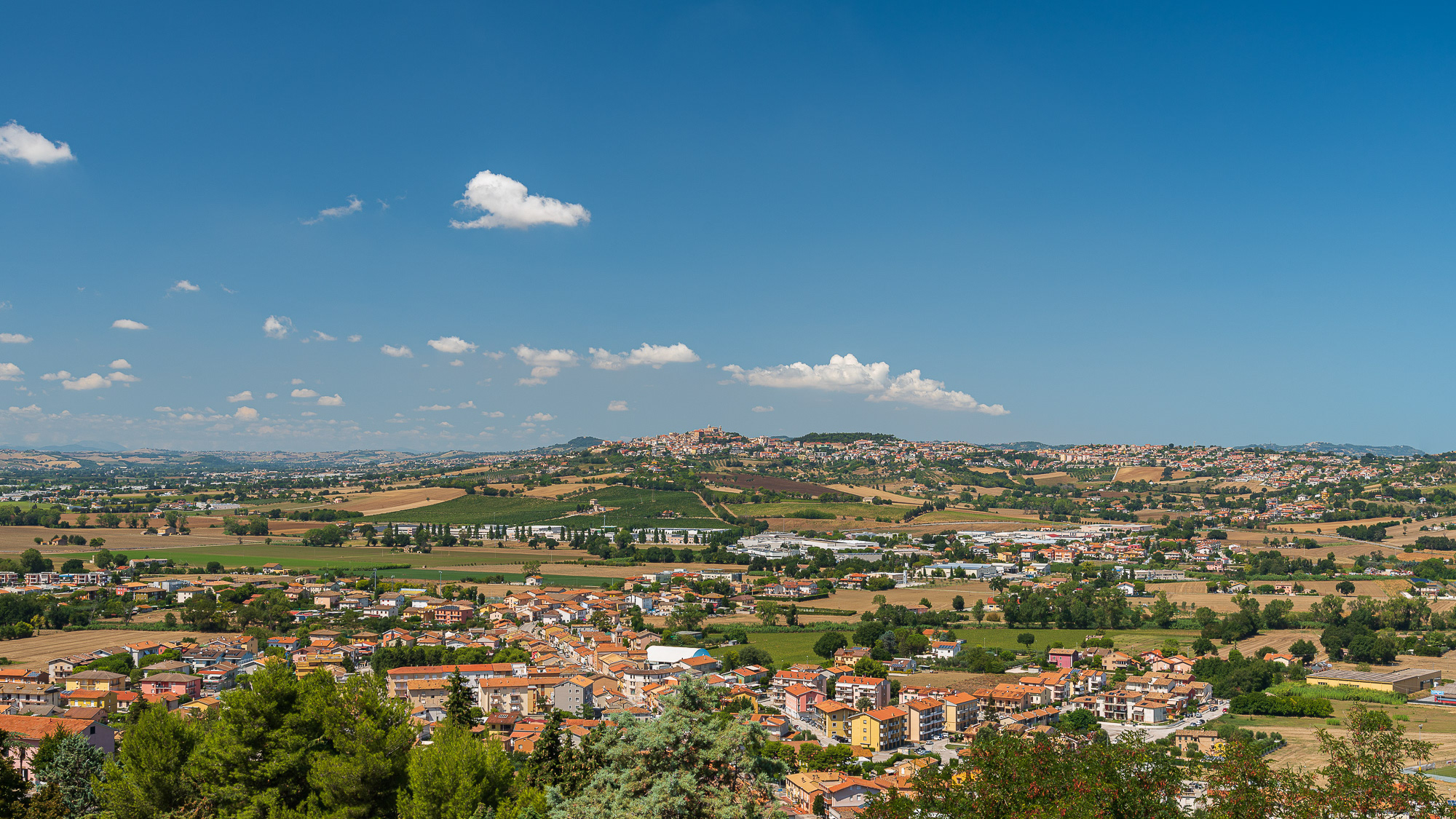Loreto. The Basilica of the Holy House
2022
The Basilica of the Holy House is one of the main places of veneration of Mary and one of the most important and visited Marian shrines of the Catholic Church. It is located in Loreto.
You may also like
2022
Recanati. Piazza Leopardi with the town hall
Recanati is an Italian town of 20 975 inhabitants in the province of Macerata in the Marche region.

2025
Cupra Marittima Alta or Marano. Views

2022
Recanati. Landscapes and views
Recanati is an Italian town of 20 975 inhabitants in the province of Macerata in the Marche region.

2025
Grottammare. Oasis of Santa Maria ai Monti
The structure, belonging to the order of the reformed minor friars, was built in the 17th century on the site of a small Marian sanctuary dedicated to the Madonna dei Monti, protector from the plague.
2025
Marche, spectacular view and sunset
2022
Recanati. The Torre del Borgo
36 meters high and crowned by Ghibelline battlements, the Torre del Borgo was built in the 12th century and is located in Piazza Giacomo Leopardi in Recanati
2022
Ascoli Piceno. The church of S. Tommaso Apostolo
The church of S. Tommaso Apostolo, built in Romanesque style, stands on the side of the homonymous square which houses the remains of the Roman amphitheater of Ascoli Piceno, reinterred in 1974.
2022
Marche. Wonderful view of the Marche hills
The Marche, a region of eastern Italy, rises between the Apennine mountains and the Adriatic Sea.

2020
Rotella. Hermitage of San Francesco
In the territory of Poggio Canoso, along the road from Rotella to the Ascension mountain, there is an ancient convent, one of the first Franciscan hermitages built in the region. Tradition has it that it was San Francesco himself, perhaps bringing back everything that was already existing Benedictine, to choose the place that would host his convent and remain there for a night. The convent of Poggio Canoso was suppressed on 18 December 1653. After the uncertainties about its use, the convent finally received the attention it deserved and from 1989 to 2009 it was the seat of the "Meeting Community" of Don Pierino Gelmini. The boys, guests of the center, with precise and assiduous work, managed to restore the church, the cloister and all the ancient Franciscan structures to the splendors of the times of the conventual fathers.

2022
Ascoli Piceno. The Cathedral of San Emidio
The city's cathedral, dedicated to the patron saint, stands on the site of a Roman public building, perhaps the Basilica del Foro, and is the result of multiple construction events that substantially range from the 11th to the 16th century. The main facade created by Cola dell'Amatrice opens onto Piazza Arringo, while the two side facades date back to the end of the 15th century. The interior, with three naves divided by polygonal pillars, from the end of the fifteenth century, houses, among the various works, in the central apse a late Gothic wooden choir from the first half of the fifteenth century, a wooden pulpit from around 1660; in the Chapel of the Sacrament the Polyptych of Sant'Emidio by Carlo Crivelli, the imposing decorative cycle by Cesare Mariani, and the crypt of Sant'Emidio, built in the mid-11th century which houses, in a 4th century sarcophagus, the relics of the patron saint of the city.
